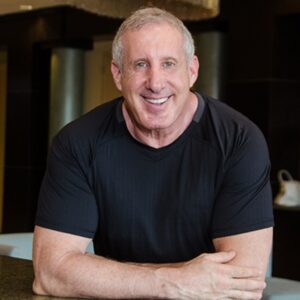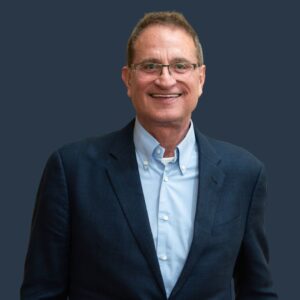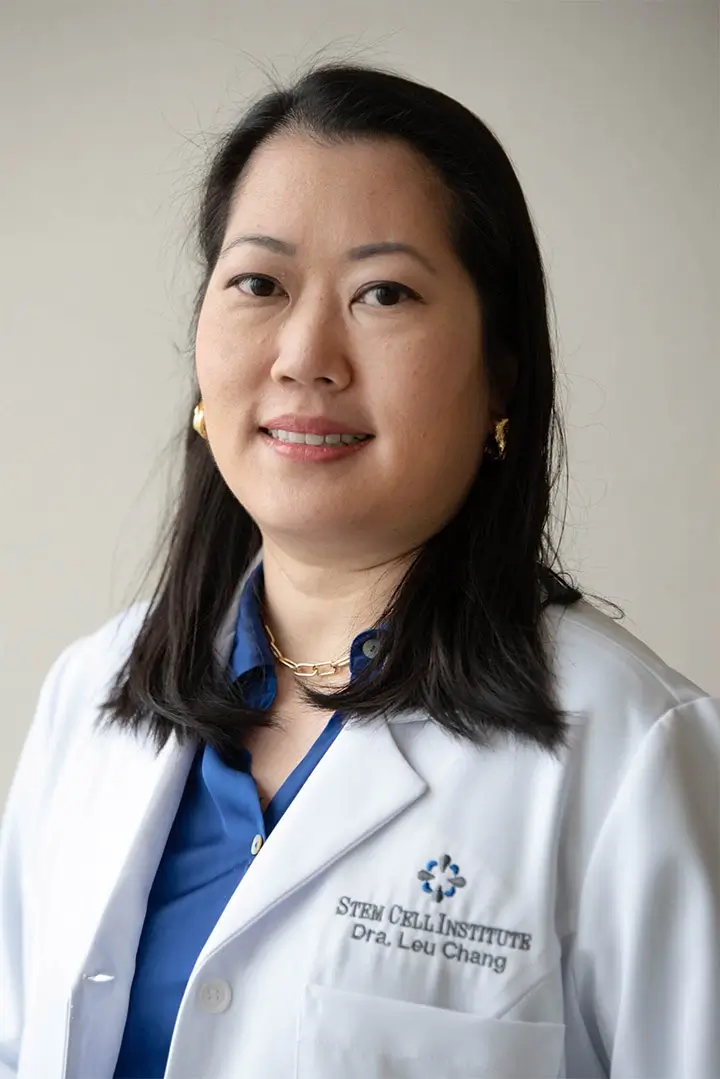
Larry North has been helping people become healthy for over 25 years. He’s done this with three best-selling books, seminars, gyms, and his radio show. Larry sat down with Neil Riordan, PA, PhD, and chairman of MedStem Panama to discuss stem cells.
Dr. Riordan has also published many scientific articles in peer-reviewed journals. This includes articles on MS, spinal cord injuries, heart failure, arthritis, and autism. Along with being the board chairman and founder of Stem Cell Institute in Panama, Dr. Riordan is also the founder and chief scientist of Riordan Medical Institute in Southlake, TX.
Dr. Riordan’s Previous Work
Larry: You flew in from Wichita, which is where you’re from, right?
Neil: Yeah, that’s my hometown. We were doing a fundraiser for a young man who has Duchenne’s muscular dystrophy, and originally we started treating him in Panama using stem cells from umbilical cords, and he responded very well, and he responds each time he gets treated, but we have to keep treating him. It’s a very long-term treatment. He has to get new cells every 4-6 months.
He is the first person in the US to get umbilical cord stem cells for any indication, and we’re under the FDA. They’ve given us an investigational new drug, compassionate use, because he was treated seven times out of the country, but they gave us the green light for him to get treated in the country.
He’s been treated now three years, every four months now, and when he gets those stem cells his breathing goes up, everything improves. In fact, now, eight years later since his first treatment, he’s in better health now than he was at 22, and he’s about 30 and a half.
Larry: I’ve been around you long enough and I’ve heard these types of stories, I really hope we can inspire a lot of our listeners. I’d like to start from the beginning. Your father was really kind of a holistic pioneer when it came to better health, was he not?
NR: Absolutely. My father and later myself, we did a lot of work on cancer therapy, and what we worked most on was intravenous vitamin C for cancer treatment, decades ago, back when that was really quackery.
Now we have universities like Thomas Jefferson starting their third clinical trial using intravenous vitamin C for cancer patients, the University of Iowa, even Johns Hopkins has started a study. Some of these ideas take time to catch on, but they’re really catching on now.
Larry: What was it like growing up with a father so cutting edge, so way ahead of his time?
NR: I think in retrospect now I realize how brave he was in doing the things he was doing. As my brother says, you can recognize a pioneer by the arrows in his back. He certainly had a few, but I think his legacy is that those arrows were unwarranted, and now you have major universities carrying on the research.
The quality of life of cancer patients when they get intravenous vitamin C has improved. It’s been proven. More and more literature comes out, and he’s being vindicated.
How Dr. Riordan Became Interested in Stem Cells
Larry: Where did all the stem cell research start?
Neil: It actually started with one of our other research projects alongside the vitamin C research at the Riordan Clinic in Wichita, where we were looking at host non-toxic therapies for cancer. There are cells in your body called dendritic cells. They are commanders of the immune system. They tell the immune system what to do, and in cancer patients they’re being blocked.
One way to overcome that blockade to the immune system is by enhancing these dendritic cells and harvesting white blood cells to convert to dendritic cells. That was late 80s, and I left in the 90s to start my own clinic to actually make dendritic cells, to make cancer-therapeutic vaccines for cancer patients. I was in the Riordan Clinic for fourteen years, working on intravenous vitamin C and dendritic cell vaccines.
The Most Common Types of Stem Cells Available
Larry: Interesting. What are the most common types of stem cells people have available to them today? I want to talk about that, and also, why umbilical? From what I’ve read, if you want stem cells that’s where you want to go, but I understand there are other options. You were able to treat this young man locally, but most people have to go out of the country. What were the early stages of stem cell options for people and where has it evolved to?
Neil: First, I want to exclude embryonic and fetal stem cells, which are subject to a lot of debate–religious and ethical–and we want to exclude that because that’s not even part of our conversation. It’s from an ethical and scientific standpoint that we’ve never utilized or even studied embryonic or fetal stem cells.
We only use what’s classified as adult stem cells, and what’s included in that, is after a full-term healthy birth, we call those postnatal or adult stem cells. Once a healthy, normal life has begun until your demise, those are all considered adult stem cells, and we can separate those into two major categories: one is blood-forming stem cells that are formed in your bone marrow, and those are called hematopoietic stem cells or blood-forming cells because that’s what they do.
There’s a lot of confusion these days about those cells being used to treat cancer or MS, but those cells don’t really treat anything. When you hear about a cancer patient being treated with stem cells, they’re actually being treated with chemotherapy and/or radiation, in the hope that they get a high enough dose to kill the cancer, but it also kills your bone marrow’s ability to produce blood cells, so you die of an infection or you die of bleeding or something like that.
The stem cells in that world are a rescue, not a treatment. Your stem cells are gone. They’ve all been obliterated, so you need new stem cells and start making all these blood products again. The world we’re in are repair stem cells -the repair stem cells are found throughout your body called MSCs.
We use the term MSC for mesenchymal stem cells. We have them throughout our body and as we age, they become fewer in number, and as we age they lose their ability to fix things. They become less robust. So you have them in your fat, your bone marrow, every organ in your body.
The healthiest, most robust stem cells from a non-dangerous, non-controversial source are from the umbilical cord. If we look at the potency of umbilical cord MSCs compared to mine, I’m 57 years old, my cells are going to divide once every 50-60 hours, whereas the umbilical cord cells divide every 24 hours, which doesn’t sound like a lot, until you look at the numbers. One cell after 30 days you’re going to have a billion cells from one if they divide every 24 hours.
If you look at my cells in a lab, I’ll have a pitiful 2-300 cells after that period of time. It’s not just the cells, but it’s also what the cells secrete, molecules that stimulate regeneration. Our cells, because we’re over the age of 50, they do not produce as many of those factors that stimulate regeneration, they’re also less robust in their capacity to modulate the immune system and decrease inflammation. We all know that inflammation is the real key to aging.
How to Learn if You’re a Candidate for Stem Cells
Larry: Let’s say someone lives in Dallas. How would they know if they’re a candidate for stem cells?
Neil: We have a number of protocols. One of the things we do most of is we treat autoimmune diseases, and one of the indications we have is multiple sclerosis, rheumatoid arthritis and others. The cells are very good when you infuse them in the vein. They change the auto-immune environment in the body. If someone wants to explore it as a treatment option, they’d go to the site and read about what we do and fill out an application. We have six MDs that work at the Stem Cell Institute in Panama. They review every case and will call them and typically ask them for medical records.
Larry: I’ve been there, to Panama, visited and got to work with your medical professionals, and I found it an amazing experience because for me, it was orthopedic because of the fact that I was a body-builder back in the 70s and 80s and we did things back then we probably shouldn’t have done. We sort of didn’t know any better. After being in several auto accidents, my neck, my back, my knee, and I have to tell you I had stem cells directly into the knee, and prior to meeting you I thought I was going to have to have surgery. In the month or so since we last saw each other, I don’t know what’s going on in my body but I’m feeling amazing. I want more of that! For me it was orthopedic. For others listening, you talked about inflammation, and stem cells are definitely able to help with that.
Neil: Absolutely. They’re producers of the anti-inflammatory molecules in your body, the producers of your natural ibuprofen or naproxen. A lot of people, if they have a lot of arthritis, that’s another one of our protocols. Osteoarthritis, they don’t need to take those things anymore. We can inject right into the joint as well as do intravenous [injections]. The cells have this capacity to home to inflamed areas and respond to the situation to make the appropriate antibodies.
Why Did You Choose Umbilical Stem Cells Over Other Types?
Larry: What led you to umbilical stem cells over other forms of stem cell treatment?
NR: It was mainly the science. One of the misconceptions is that the cells actually become new tissue. We have people come to us asking for new bladders and new body parts. These cells do not do that. These cells go home to places of inflammation in your body. That’s the sweet spot for these MSCs and they secrete substances that turn off these inflammations, and another sweet spot is autoimmune disease.
If you look at what they secrete and their activity on the immune system and compare that to fat stem cells, you can get MSCs from your own fat. If you compare that, you have way more modulation potency from the umbilical cord than you do from your fat.
Larry: That’s quite significant.
NR: Basically, you have to get this rock over a hill from an immune standpoint, and you can get halfway up the hill and it doesn’t do any good. If you want to get the rock over the hill, the best way to do it is with the best cells that produce the right molecules that stimulate your immune system to normalize.
Where Dr. Neil Riordan Obtains Stem Cells for Panama
 Larry: The science agrees with you, there’s no question, but in the early stages, where did you go to get the cells in the first place?
Larry: The science agrees with you, there’s no question, but in the early stages, where did you go to get the cells in the first place?
Neil: In Panama, we have a 16,000-square-foot laboratory where we isolate the stem cells from umbilical cells, grow them out, freeze them down, and then we thaw them as required for use. All the hard work in Panama is in the laboratory because the actual therapy is nothing more, as you know.
Larry: Now, are there a lot of labs in the world that produce those types of cells?
Neil: There’s about a handful. We’re creating a wedge with this Duchenne’s, and we’re creating a wedge for larger studies with more individuals.
What’s the Future of Stem Cell Therapy?
Larry: Am I wrong in believing that the future is here, stem cells are going to be much bigger in peoples’ lives than they ever imagined?
Neil: Yeah, I think it’s definitely right up there with vaccinations and antibiotics as far as the next leap forward in medicine, and as congressman Joe Barton pointed out in a meeting we had a couple of months ago, the truth always comes out. Sometimes it takes longer, and in this case the effectiveness of these cells, the safety of these cells, the naturalness of these cells, all those truths will become self-evident at some point.
How long it takes, I don’t know. There are other countries investing and building a regulatory process that will speed things up. For example, Japan has put in rules and regulations that will speed things up. Germany, South Korea, and Taiwan are right behind Japan. They’re going to allow for innovation like we’ve never seen before.
If we don’t do something in this country, we’re going to be left in the dust. So, Japan’s rule basically states that once you prove the safety of your product, it can go to market for seven years, and in that seven years you can demonstrate what it’s effective for. I think we need something like that in this country if we’re going to stay competitive.
There’s a bill being revised right now called the Renew Act. I don’t know that that’s going to make it, but we need something like it or for one of the states to create a statute much like medical marijuana, where the state of Colorado has said in spite of federal regulations we’re going to allow this and the attorney general’s going to back us up.
I think Texas has a pretty good chance of that. I just got back from Kansas, and they’ve got a pretty good chance too.
Larry: Partly because of you! You’re at the forefront pushing and lobbying and really trying to create awareness.
Neil: If you look at the economic benefit, I hate to use marijuana as a comparative, but if you look at the economics in Colorado, the state coffers are swollen with cash, and I think that would happen if a state were to say to the federal government, this is what we’re going to do. There’s enough evidence of safety, certainly with the patient’s own stem cells, with the postnatal stem cells, there’s enough safety data that one state will stand up, or the federal government’s going to have to make a break.
Larry: Any parting words?
Neil: I think the best resource is www.cellmedicine.com. It tells you everything we do and don’t do.
Are you interested in what stem cells can do for you? Click here to apply today!
Dr. Riordan has also published over 70 scientific articles in peer-reviewed journals. He has been at the forefront of applied stem cell research for over 20 years. Although there are multiple ways to collect stem cells, he opts for “adult” (post natal) stem cells from umbilical cords thanks to their robustness. The specially-selected cells we use at Stem Cell Institute Panama are known as Golden Cells™, which were identified by Dr. Riordan as those with the most effective molecular structures after a rigorous retrospective analysis of our highly successful cases. As time moves forward, Neil Riordan anticipates stem cell treatments to become the norm before surgical treatment.
Stem Cell Institute in Panama City, Panama is at the forefront of applied stem cell research. Since our inception in 2008, we have performed over 50,000 procedures, helping thousands of families across the United States and worldwide embrace the opportunity for a better life. Our medical team prioritizes the health and well-being of all our patients through top-notch stem cell treatment and care.
*This blog has been updated since it was originally published in August 2016 for clarity


